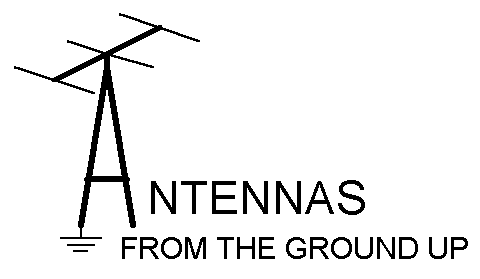
L. B. Cebik, W4RNL

The following series of articles was originally prepared for publication in Low Down, the journal of the Colorado QRP Club. The series is designed to present fundamental antenna information, concentrating most fully on lower HF band wire antennas and related topics, to QRP operators. Since Low Down has devolved into a small newsletter, I have terminated the series and will place the remaining pre-prepared items here.

Note: This series (with revisions and enhancements) are available in book form under the titles from MFJ:
-
Where Do Antennas Fit in Your Communications System?
-
The Resonant Half-Wavelength Center-Fed Antenna
-
Azimuth, Elevation, and Antenna Modeling
-
Making a Dipole Fit the Space Available
-
A 135' Center-Fed Multi-Band Dipole Data Compendium
-
A 102' Center-Fed Multi-Band Dipole Data Compendium
-
How to Make Your Tuner Work on Every Band
-
Horizontal vs. Vertical Antennas on the Low HF Bands
-
Fundamentals of Off-Center-Fed Dipoles
-
Harmonic Operation of OCFs
-
A 135' Off-Center-Fed Multi-Band Dipole Data Compendium
-
A 135' End-Fed Multi-Band Dipole Data Compendium
-
What Happens Along a Length of Feedline
-
ATUs, Delta, and Tuner Losses
-
More on ATUs, Delta, and Losses
-
Noise, Antennas, and Receiving Systems
-
Vertically-Oriented, Horizontally Polarized 1 wl Loops
-
Multiband Use of VOHPLs
-
Vertically Oriented, Vertically Polarized 1 wl Loops
-
Some Facts and Fantasies About Standing Wave Ratios
-
A Short Look at Wire Beams
-
A Horizontal 80-Meter Multi-Band Loop Data Compendium
-
Where to Place Your Impedance Matching Efforts
-
The 75-Ohm 1/4 Wavelength Matching Section
-
A 1/2 Wavelength Inverted-L Multi-Band Antenna Data Compendium
-
A 3/8 Wavelength Inverted-L Multi-Band Antenna Data Compendium
-
Differentiating Among Many Types of Grounds
-
Why Parasitic Beams Work
-
Interesting Alternatives to the Yagi
-
A Collection of Inverted-Vee Patterns
-
Handling Parallel Feedlines
-
When and Which Parallel Feedline to Use
-
Unwanted Currents and Their Suppression
-
The 44' Doublet as a 40-10 Meter
-
Sorting Out Bi-Directional Phased Arrays
-
The Dual Expanded Lazy-H for 80-10 Meters
-
A Potpourri of Bent Dipoles
-
A Collection of Quadrant Antenna Patterns
-
A Nearly All-Band Vertical Doublet
-
The Terminated Wide-Band Folded Dipole Antenna
-
The Terminated (Very) Longwire Antenna
-
The Terminated Vee-Beam and Rhombic

 Return to Amateur Radio Page
Return to Amateur Radio Page

